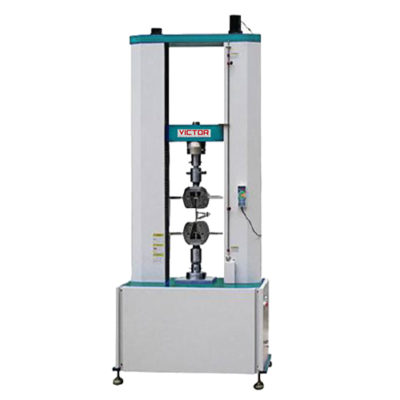ASTM is an international standards organization that is located in the United States of America. The purpose it was introduced to the industry is to publish technical standard agreements for various materials, product, systems and others. Among the ASTM standards that are often use in the industry is ASTM C1609.
ASTM C1609 Test Standard
Description
ASTM C1609 is an international test standard design for evaluates the flexural performance of fiber-reinforced concrete. This standard using parameters derived from the load-deflection curve obtained by testing a simply supported beam under third-point loading using a closed-loop, servo-controlled testing system. Manufacturing industries such as fiber, construction and others often use this standard. In this test method, it has two preferred specimen sizes. The first is 4 by 4 by 14 in tested on a 12 in span and the second is 6 by 6 by 20 in tested on an 18 in span. Nowadays, ASTM standards are highly preferred by both corporate or government bodies. In Malaysia, most industries use the ASTM C1609 standard in their companies. The Malaysian government has also adopted this standard.
Basically, ASTM C1609 measures the first-peak strength, peak strength, and residual strengths of fiber-reinforced concrete under static flexural loading. The purpose of ASTM C1609 is to not only determine the peak strength of the concrete but also to find the residual strength from the fibers after the first crack appears. This test method may be use for comparison of mixtures, quality control, and research and development (R&D). This test can be perform on using Universal Testing Machine (UTM). Victor manufacturing provides good machines, grips, equipment, and fixtures for testing in accordance with ASTM C1609.
The mechanical testing machine use must be equipped with the appropriate bend fixture, two displacement transducers, and software capable of controlling the test and recording the data is require. To perform this test, the machine used shall operate in compression at very slow test speeds under closed-loop deflection rate control. Because of that, electro-Mechanical testers are preferred to use. Based on the standard, the test must be perform in servo control at very slow deflection rates with servo feedback from the average of two deflection sensors placed on either side of the specimen.
A “third-point loading” fixture is used in this test. At the top of the beam it has two loading noses and it also has two support points below of the beam. A fixture is mounted on the beam’s neutral axis directly over the supports. There are two displacement transducers is used. It is placed one on each side of the beam. The transducers are mounted to the jig mid-span to measure beam deflection. The outputs of the transducers are averaged together to provide the net deflection measurement. This configuration is made to ensure accurate measurement of mid-span deflection and minimizes errors due to concrete specimen twisting or seating in the supports.
We at victor manufacturing provide good software to ensure the test runs smoothly. Here we use two good software namely REAL TEST and MAX TEST software. This software provided the flexibility to adjust servo control parameters throughout the test to ensure the test ran with no problems under all conditions. The results of this test method may be used for comparing the performance of various fiber-reinforced concrete mixtures or in research and development work. In addition, the results of this test can determine the quality of the concrete produced and to verify compliance with construction specifications.
Type of UTM machine
ASTM C1609 specifies that the test must be perform in servo control at very slow net deflection rates. Victor manufacturing provides a machine that fits this test. Victor manufacturing provides a machine that fits this test. We have various types of machines with capacities from 50kN to 200kN. Almost all C1609 tests can be perform on a 100kN machine. We also recommend using a dual-column floor type machine.
1. VEW 2302

VEW 2302 Computer Servo Type Universal Testing Machine is a new material testing machine that combined with the electronic technology and mechanical transmission, it has accurate load speed, range of force measurement, has high accuracy and sensitivity for the load, displacement measurement and control, it also can be tested the constant-velocity loading, constant- velocity displacement. This machine is simple to operate, especially suitable for controlling quality in production line, this series of machine is mainly applied to test the non-metallic and metallic materials which the load is less than 30ton.
Main Function:
- Mainly applied to test the metallic and non-metallic materials in tension, compression, bending, shear, peel, tear or two-points extensions and others.
- Can be used for materials such as rubber, plastic, wire and cable, optical fiber and cable, safe belt, leather belt composite materials, plastic profiles, waterproof membrane, steel, copper, profiles, spring steel, bearing steel, stainless steel (as well as other high-hardness steel), castings, plate, strip, non-ferrous metal wire.
Test Procedure
- Prepare the specimens as described in the method.
- Measure and record the specimen dimensions
- Mount the frame with the deflectometer on the specimen. Ensure that there is enough travel for them to record the sample deflection at the mid-point.
- Load the specimen on the third-point loading fixture.
- Zero all the testing machine before starting the test.
- Begin the test by Click start button on the software.
- Run the test at the specified net deflection rates as measured at the mid-span point of the beam.
- Record and report test data that has been performed.
